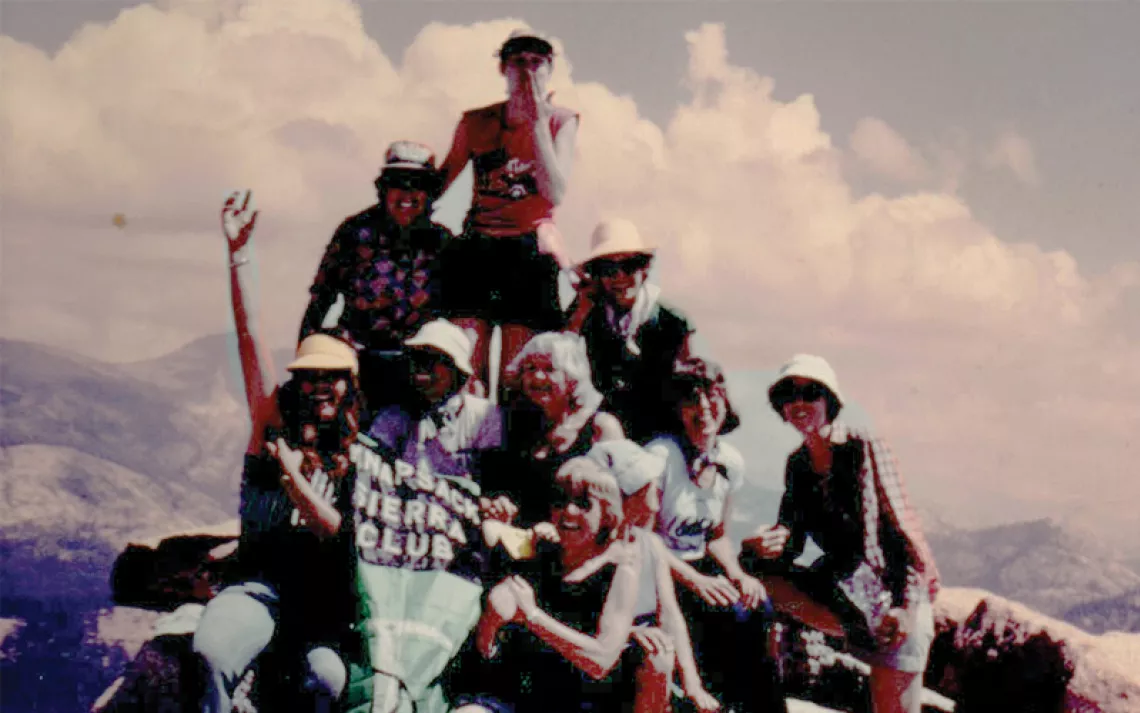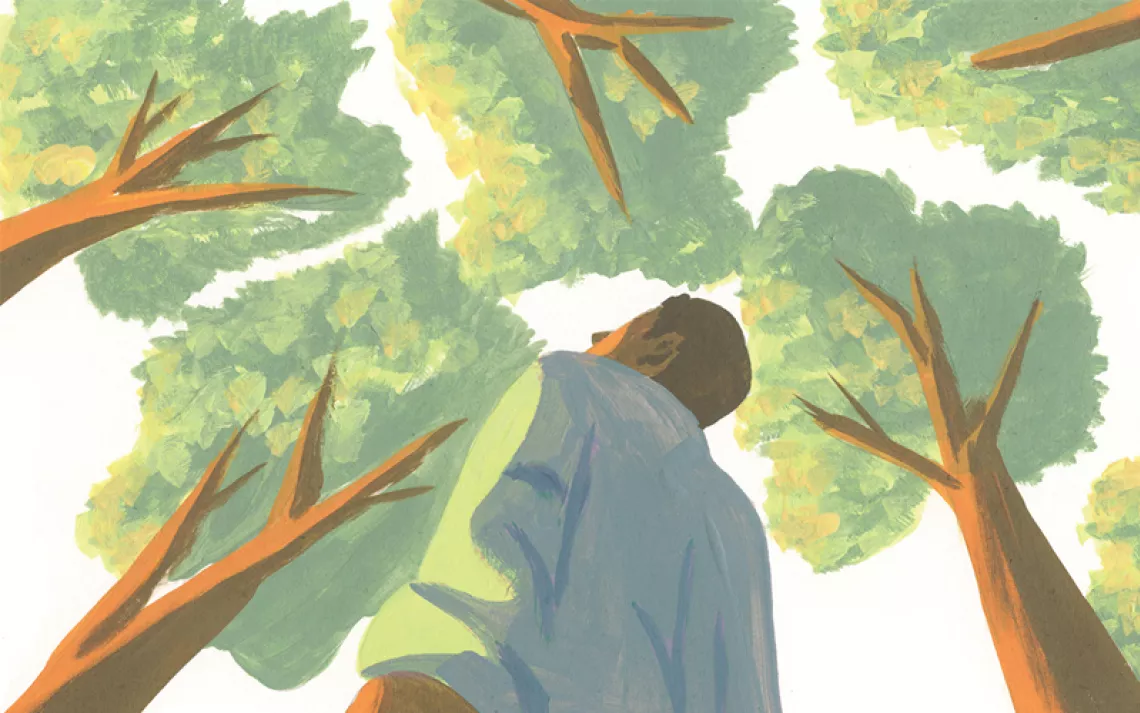ENVIRONMENT EXPLAINED
6 of America's Most Dangerous Hiking Trails
With temperatures rising, many of you are gearing up for a vacation with family or friends. You might be dreaming of the world's most stunning canyons or America's newest monuments, but we know that some of you are also looking for a serious challenge this year. For those who are brave enough, prep those hiking boots, gather your supplies, and tackle some of America's most challenging and scenic hiking excursions.
April 11, 2013
The Maze, Canyonlands National Park, Utah

Step aside, amateurs, this trail can test both the physical and mental abilities of even the most advanced hikers. Located in Utah's Canyonlands National Park, the 13.5-mile path requires hikers to follow a maze-like trail, leading them in and out of sandstone walls and deep canyons. And did we mention that temperatures often reach about 110 degrees Fahrenheit? This trail's biggest challenge may be that climbers have to be self-sufficient and very map-savvy. As you wander in and out of the canyons, they can all start to look alike, making it difficult to accurately locate landmarks. And since water isn't plentiful and temperatures are unforgiving, this maze could become a death trap.
Although we believe it to be one of the most dangerous trails, it may be the only one on our list that hasn't claimed any fatalities. Likely because the climbers who dare to take it on are pretty sure what they are getting themselves into. A few helpful tips: Carry a GPS and a map, so you not only know where you are but also where are need to go. Always have water. And most of all, be sure you know just what you are getting yourself into. Beginning climbers and even those with a bit more experience may want to leave this one to the experts.
Photo courtesy of iStockphoto/desertsolitaire
Mist Trail, Half Dome, California

Tucked away in world-renowned Yosemite National Park, the Mist Trail attracts thousands of visitors every year to climb to Half Dome's 8,836-foot-high peak. Hike through beautiful pine forests, bustling waterfalls, and what seems to be a vertical staircase before reaching the steel cables that will take you the last 400 vertical feet to the top of the dome.
Even with cables to assist, the final ascent to Half Dome requires extreme strength and is only for the brave at heart. Without the cables, the hike to the summit of this beautiful landmark would be virtually impossible. And even with this assistance, there have still been unfortunate causalities on this Californian adventure. Since 1995, six deaths have occurred at Half Dome -- one when a hiker was attempting to pass other climbers on the cables.
Another danger to be aware of is the altitude change. Within four hours of starting the climb, hikers can gain 1,463 vertical meters. Additionally, during winter, spring, and fall, rainfall often makes rocks slippery and especially hazardous.
Since most falls from this trail have happened when the rocks are wet, it is best to be conscious of the weather reports during your climb. Leather gloves, great hiking boots, and an excellent fitness level are requirements for anyone who dares attempt it.
Photo courtesty of Wikimedia Commons
Skyline/Muir Snowfield Trail at Mount Rainier, Washington

While some trails boast of scorching hot temperatures, this trail promises to keep you cool. Located in Washington State, the Skyline/Muir Snowfield Trail stretches 9 miles, roundtrip, and delights hikers with scenic wildflowers, lush forest, and lakes before hitting the 2.3-mile stretch known as Muir Snowfield. Although cold, the ascent before Muir Snowfield is quite innocent compared with what's to come.
The unmarked Muir Snowfield climb is a 2,800-vertical-foot hike, and unfortunately, it isn't only the physical strain of the hike that offers the challenge but also the vicious storms that can unexpectedly come through from the Pacific. Although it was likely a piece of cake for brave naturalist and Sierra Club founder John Muir (who is also this trail's namesake), many people have found the climb to be much less rewarding. It is said that around 90 climbers have slipped and fallen or have become frozen in an attempt to ascend this fierce mountain. As recently as last January, a climber died of hypothermia at 8,000 feet on his Muir ascent, making him one of several Mount Rainer casualities in 2012. And just in case you aren't a little frightened already, did we mention that Mount Rainer is also an active volcano? So you should attempt this wintery trail only if you have taken the proper precautions.
An important thing to remember when tackling this path is that unexpected conditions are to be expected. Aside from needing to be an advanced climber, here are some suggestions for a successful trip: Be sure to track your route with a topographic map, a GPS, or a compass. And always have a device with which you can check reports from the Northwest Weather and Avalanche Center. Also, it is best to travel in a small group with other experienced hikers.
Photo courtesy of Wikimedia Commons
Bright Angel Trail, Grand Canyon, Arizona

Although it's well-maintained, don't let this trail in Arizona's stunning Grand Canyon National Park fool you. It's actually no walk in the park. Trekking across this dirt path could mean enduring temperatures of up to 110 degrees Fahrenheit over a very steep 9.5 miles. From rim to river, hikers of this trail push through a vertical climb of 4,380 feet and back. And judging from past hikers' experiences, it is as intense as it sounds.
It can be done in a day, but it is suggested that hikers begin the trail before dawn and complete it after sunset. And in the summer months, it may be best to turn this hike into a two-day excursion. Trust us, even the most experienced hiker should heed this advice. For some who didn't, the consequences were fatal. In the past decade, the park has created the Preventive Search and Rescue (PSAR) team for exactly this reason. After numerous fatalities in the '90s, the team was put in place to patrol the trail and assist hikers in need. But even the PSAR can't protect those packers who don't follow rangers' recommendations. In 2005, a 28-year-old British hiker died of a heat-related illness when hiking the canyon in the mid afternoon. Although he and his climbing partner waited until 4 p.m., the heat was still 113 degrees—unbearable for most climbers.
Although the brave and impulsive climbers who make this trip are often looking for an opportunity to push themselves to the limits, they must pace themselves on the ascent. Instead of pushing your yourself until you collapse, it is suggested that for every hour of climbing, you should rest for 15 minutes. And although water is extremely important, it is just as critical not to overhydrate. Bring salty snacks in your hiking pack and carry iodine pills and a filter in case water supplies run low. With the proper planning, your excursion through the Bright Angel Trail can be a great adventure.
Photo courtesty of iStockphoto/tonda
Rover's Run, Anchorage, Alaska

Weather conditions, fatigue, and twisting trails are not the only dangers that can present themselves on an adventurous hike. Rover's Run in Anchorage, Alaska, formerly used as a game trail, is frequented by a few dozen brown bears. Although the bears don't set out to hurt trail users, there have been several nonfatal attacks on mountain bikers.
In 2010, a 45 year-old man was heading to work on the trail and was attacked by a brown bear that was attempting to protect her cubs. The man played dead and, although clawed by the bear, was able to ride his bike to the nearest medical center. And only two years earlier, a 15-year-old biker was also severely mauled on the trail.
The run, which is a short two miles one-way, is used mostly by bikers and skiers. For years there have been discussions about whether it should be closed because of the number of brown bears and their attacks on trail users.
Photo by iStock/karthikveeramani
Devil's Path, Catskills, New York

Stunning views, waterfalls, vertical climbs, and the occasional black bear come together to make this New York trail one of the most dangerous yet. At almost 25 miles long, Devil's Path boasts a climb and descent of about 14,000 feet. However, the path, located just two hours from Manhattan, is as beautiful as it is challenging.
As you ascend up to steep peaks and descend into deep valleys, the views are said to be absolutely breathtaking—that is if you make it there on two feet. This wild hike is home to very slippery rocks covered with algae and to unforgiving mountainsides that can be extremely dangerous if proper precautions aren't taken.
Be careful of the time of day you begin this trek. Although the hike is usually made in one or two days, it is important to remember than when the temperature drops at night, the path can be both wet and icy. Allow yourself plenty of time, as conditions on the climb can change. And keep in mind that the black bears in the area are hungry. Not for you. necessarily, but your food may be quite tempting to them. If you choose to spend the night on the hike, keep meals and scraps stashed away somewhere safe.
Photo courtesy of Wikimedia Commons
Brittany Johnson is former editorial intern at Sierra. Her interests include social and environmental justice specifically among underrepresented and disadvantaged communities. She majored in Global Studies at the University of North Carolina at Chapel Hill, taught English in Tanzania and answered phones in various offices before joining the Sierra family.
More articles by this author- Keywords:
- adventure
- bucket list
- travel
- hiking
- climbing
 The Magazine of The Sierra Club
The Magazine of The Sierra Club



